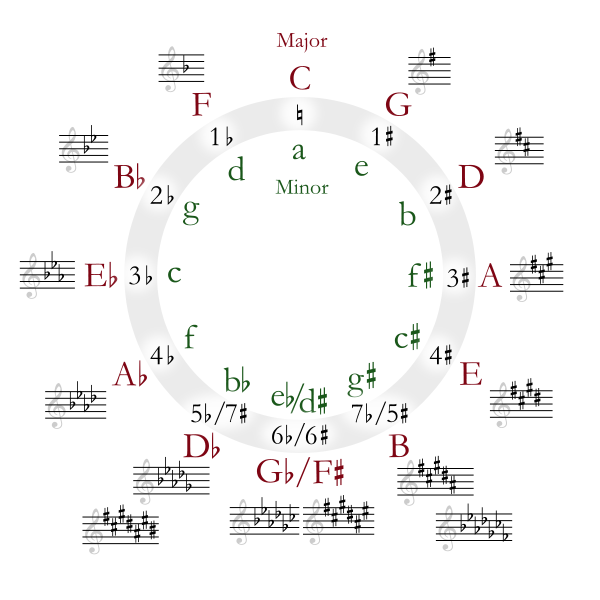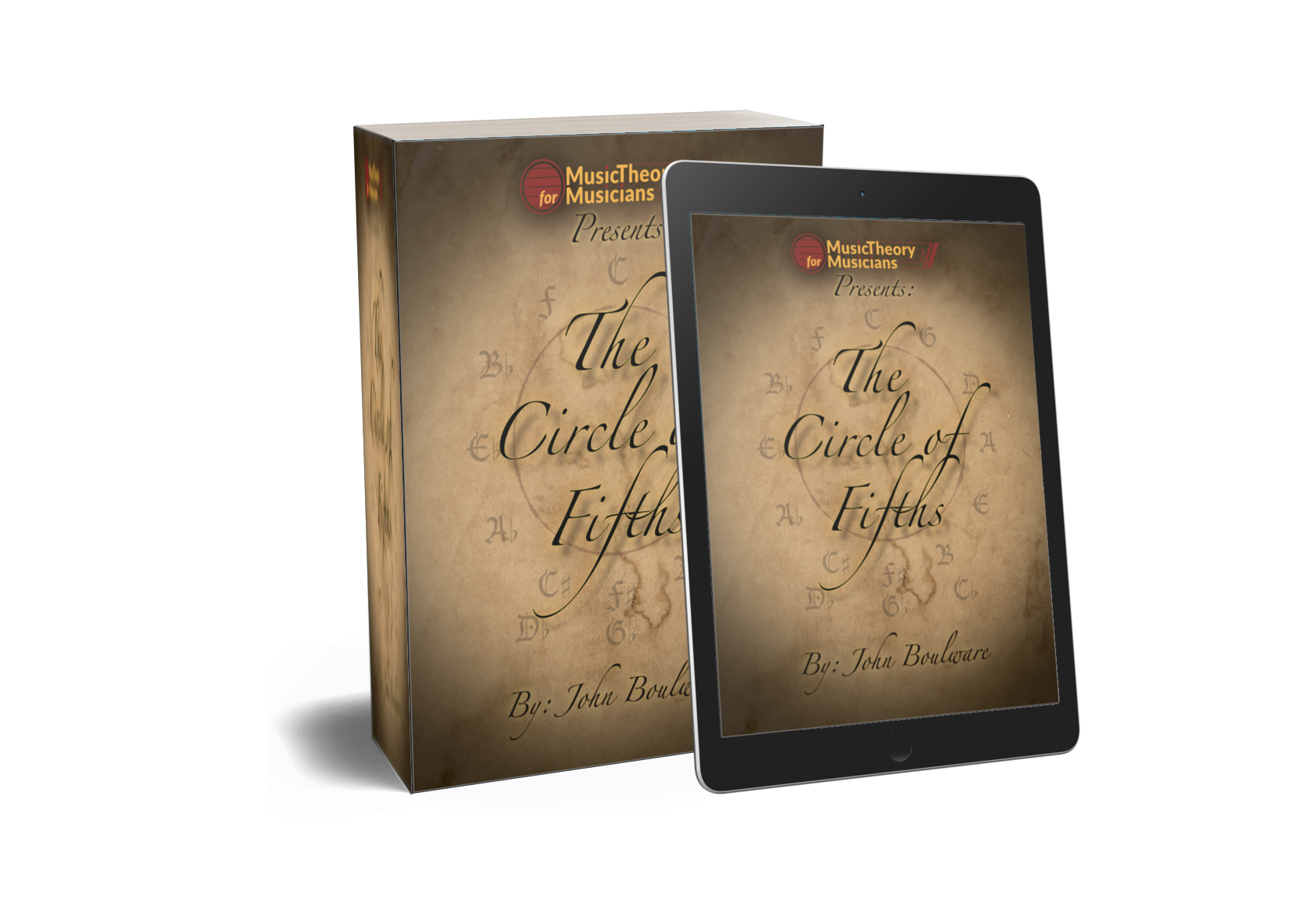Learn the Circle of Fifths and How YOU Can Use It!
Ever heard people talking about the circle of fifths and wondered what it was? Or are you familiar with it, but don't know what it does or how to use it? Well wonder no more.
The Circle of Fifths is a chart organizing all of the keys into a system that we can use to relate them to one another. There are several versions of this chart. The most common ones use only the major keys with only the chord symbols. The version below however shows the major and minor keys with their key signatures.

How to Read the Circle
How Does This Work?
The letters on the outside of the circle are the major keys and the letters on the inside are minor. The circle itself shows how many sharps or flats there are in each key, and the key signatures are on the edge.
This is called the Circle of Fifths because each note is a perfect fifth away from another. A perfect fifth is the distance of 7 notes tones: A, A#, B, C, C#, D, D#, E.
When we go clockwise around the circle, we are going "up a fifth". This is also called adding a sharp (because of what it does to the key signature). When we go counter-clockwise, we are going "down a fifth". This is also called adding a flat.
(This is also called the Circle of Fourths because when we go "up a fifth", it is the same thing as going down a fourth. Also when we go "down a fifth", it is the same thing as going up a fourth.)
This is just a very brief look at the Circle. For a better understanding you should check out The Circle of Fifths Ebook.

Using the Circle
So how is this useful?
- Dominant 7th chords (which show up EVERYWHERE in all kinds of music), have a certain tendency to go towards certain chords. But which chord is next? The answer is simply to go down a fifth, or counter-clockwise on the circle. So if we are dealing with an A7, it will pull toward a D. If we are dealing with an F7, it will pull toward a Bb.
- You can also use the Circle of Fifths to work out ANY major or minor scale by playing a game of leap frog going around the circle. Check out this page to find out how.
- When playing most kinds of music, the most common chords will be the chord of the key you are working in, and the chords on either side of it on the circle. For example, if you are playing in the key of C, you'll likely use F and G as well.
- When writing songs, sometimes it can be difficult to come up with interesting chord progressions. We can use the chart for this. The closer two chords are on the circle, the better they will sound together. Part of the reason this is used so much in music is because they sound good. To make it more interesting, take the key you are in (for example 'D') and leap to another chord (we'll use C). Then work back through the chords toward home base again and use the chords around it. Try playing this on your instrument to see how it sounds.
Sample chord progression : D C G D G A D
And there we have a perfectly good sounding chord progression.
How do YOU use the Circle of Fifths?
Tell us YOUR creative ideas on how to use the Circle of Fifths.
Read Other Visitors' Tips
Click below to see contributions from other visitors to this page...
Use the Circle to Find NNS Chord Progressions 




I have constructed a circle of numbers outside the circle of fifths. The numbers correspond with the scale notes, so that if C is at the top of the circle, …
Build a Major chord 




Any two adjacent notes moving clockwise around the circle are a perfect fifth (seven semitones). If you start from the first, count four more clockwise …
Flatten It Out 




From the beginning, using the circle of fifths chart was always difficult. In my mind, it was tough to picture it, manipulate it, learn from it- so I flattened …
Order of Sharps and Flats in Key Signatures 



Here is how you can use the Circle of Fifths to learn the order of sharps and flats in key signatures
Draw an imaginary line between F and B-flat on …
Hope this helps! Practice hard and let me know if you have any questions!